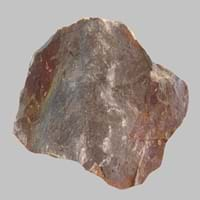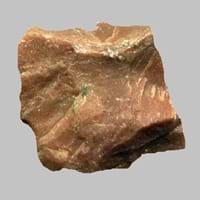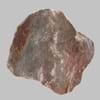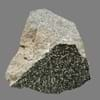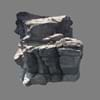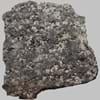Definition
Hawaiite is volcanic rock that resembles basalt. It is an olivine basalt with intermediate composition between alkali olivine and mugearite
Rhyolite is a fine-grained igneous rock which is rich in silica
Origin
Hawaii Islands
North America
Discoverer
Joseph Iddings
Ferdinand von Richthofen
Etymology
From Hawaii Islands
From German Rhyolit, from Greek rhuax lava stream + lithos stone
Class
Igneous Rocks
Igneous Rocks
Sub-Class
Durable Rock, Medium Hardness Rock
Durable Rock, Hard Rock
Other Categories
Opaque Rock
Coarse Grained Rock, Opaque Rock
Texture
Glassy, Massive, Porphyritic, Scoriaceous, Vesicular
Aphanitic, Glassy, Porphyritic
Color
Black, Brown, Light to Dark Grey
Grey, White, Light Black
Durability
Durable
Durable
Scratch Resistant
Yes
Yes
Appearance
Dull and Soft
Banded
Interior Uses
Decorative Aggregates, Floor Tiles, Flooring, Homes, Hotels, Interior Decoration, Kitchens
Decorative Aggregates, Homes, Hotels, Interior Decoration, Kitchens
Exterior Uses
As Building Stone, As Facing Stone, Paving Stone, Garden Decoration, Office Buildings
As Building Stone, As Facing Stone, Paving Stone, Office Buildings
Other Architectural Uses
Curbing
Not Yet Used
Construction Industry
As Dimension Stone, Cobblestones, Rail Track Ballast, Roadstone
Arrowheads, As Dimension Stone, Building houses or walls, Construction Aggregate, Cutting Tool, for Road Aggregate, Knives
Medical Industry
Not Yet Used
Not Yet Used
Antiquity Uses
Artifacts
Artifacts
Commercial Uses
Creating Artwork, Sea Defence
Gemstone, Laboratory bench tops, Jewelry
Types
Not Available
Pumice Rocks, Obsidian Rocks, Perlite Rocks, Porphyritic Rocks.
Features
Has High structural resistance against erosion and climate, Very fine grained rock
Acidic in nature, Available in lots of colors
Archaeological Significance
Monuments
Used
Not Yet Used
Famous Monuments
Easter Island in the Polynesian Triangle, Pacific Ocean
Not Applicable
Sculpture
Not Yet Used
Not Yet Used
Famous Sculptures
Not Applicable
Not Applicable
Pictographs
Used
Not Used
Petroglyphs
Used
Not Used
Figurines
Not Yet Used
Not Yet Used
Formation
Hawaiite is a fine-grained, hard rock that forms when bits of lava shoot out of volcanoes and reach the Earth's surface.
Rhyolite is a felsic extrusive rock and due to its high silica content, rhyolite lava is very viscous and is volcanic equivalent of granite.
Mineral Content
Olivine, Plagioclase, Pyroxene
Biotite, Feldspar, Hornblade, Plagioclase, Pyroxene, Quartz
Compound Content
Aluminium Oxide, CaO, Iron(III) Oxide, FeO, Potassium Oxide, MgO, MnO, Sodium Oxide, Phosphorus Pentoxide, Silicon Dioxide, Titanium Dioxide
Ca, Fe, Potassium Oxide, Mg, Potassium, Silicon Dioxide, Sodium
Types of Metamorphism
Impact Metamorphism
Burial Metamorphism, Cataclastic Metamorphism, Regional Metamorphism
Types of Weathering
Biological Weathering
Biological Weathering, Chemical Weathering, Mechanical Weathering
Types of Erosion
Not Applicable
Chemical Erosion, Sea Erosion, Water Erosion, Wind Erosion
Grain Size
Not Applicable
Large and Coarse Grained
Fracture
Conchoidal
Sub-conchoidal
Streak
Not Available
Colorless
Porosity
Less Porous
Highly Porous
Luster
Not Available
Earthy
Cleavage
Not Applicable
Not Available
Toughness
Not Available
2
Specific Gravity
Not Available
2.65-2.67
Transparency
Opaque
Opaque
Density
Not Available
2.4-2.6 g/cm3
Resistance
Heat Resistant, Pressure Resistant, Wear Resistant
Heat Resistant, Wear Resistant
Deposits in Eastern Continents
Asia
India, Russia
China, India
Africa
South Africa
Angola, Egypt, Madagascar, Namibia, Nigeria, South Africa
Europe
Iceland
Germany, Iceland, Ireland, Italy, Spain
Others
Hawaii Islands
Not Yet Found
Deposits in Western Continents
North America
Canada, USA
Canada, USA
South America
Brazil
Argentina, Bolivia, Chile, Colombia, Ecuador, Peru, Venezuela
Deposits in Oceania Continent
Australia
Not Yet Found
New Zealand, Queensland, Western Australia
Hawaiite vs Rhyolite Characteristics
Though some rocks look identical, they have certain characteristics which distinguish them from others. Characteristics of rocks include texture, appearance, color, fracture, streak, hardness etc. Hawaiite vs Rhyolite characteristics assist us to distinguish and recognize rocks. Also you can check about Properties of Hawaiite and Properties of Rhyolite. Learn more about Hawaiite vs Rhyolite in the next section. The interior uses of Hawaiite include Decorative aggregates, Floor tiles, Flooring, Homes, Hotels, Interior decoration and Kitchens whereas the interior uses of Rhyolite include Decorative aggregates, Homes, Hotels, Interior decoration and Kitchens. Due to some exceptional properties of Hawaiite and Rhyolite, they have various applications in construction industry. The uses of Hawaiite in construction industry include As dimension stone, Cobblestones, Rail track ballast, Roadstone and that of Rhyolite include Arrowheads, As dimension stone, Building houses or walls, Construction aggregate, Cutting tool, For road aggregate, Knives.
More about Hawaiite and Rhyolite
Here you can know more about Hawaiite and Rhyolite. The life cycle of a rock consists of formation of rock, composition of rock and transformation of rock. The composition of Hawaiite and Rhyolite consists of mineral content and compound content. The mineral content of Hawaiite includes Olivine, Plagioclase, Pyroxene and mineral content of Rhyolite includes Biotite, Feldspar, Hornblade, Plagioclase, Pyroxene, Quartz. You can also check out the list of all Igneous Rocks. When we have to compare Hawaiite vs Rhyolite, the texture, color and appearance plays an important role in determining the type of rock. Hawaiite is available in black, brown, light to dark grey colors whereas, Rhyolite is available in grey, white, light black colors. Appearance of Hawaiite is Dull and Soft and that of Rhyolite is Banded. Properties of rock is another aspect for Hawaiite vs Rhyolite. The hardness of Hawaiite is 6 and that of Rhyolite is 6-7. The types of Hawaiite are Not Available whereas types of Rhyolite are Pumice Rocks, Obsidian Rocks, Perlite Rocks, Porphyritic Rocks.. Streak of rock is the color of powder produced when it is dragged across an unweathered surface. The streak of Hawaiite is not available while that of Rhyolite is colorless. The specific heat capacity of Hawaiite is Not Available and that of Rhyolite is Not Available. Depending on the properties like hardness, toughness, specific heat capacity, porosity etc., rocks are resistant to heat, wear, impact, etc.Hawaiite is heat resistant, pressure resistant, wear resistant whereas Rhyolite is heat resistant, wear resistant.
